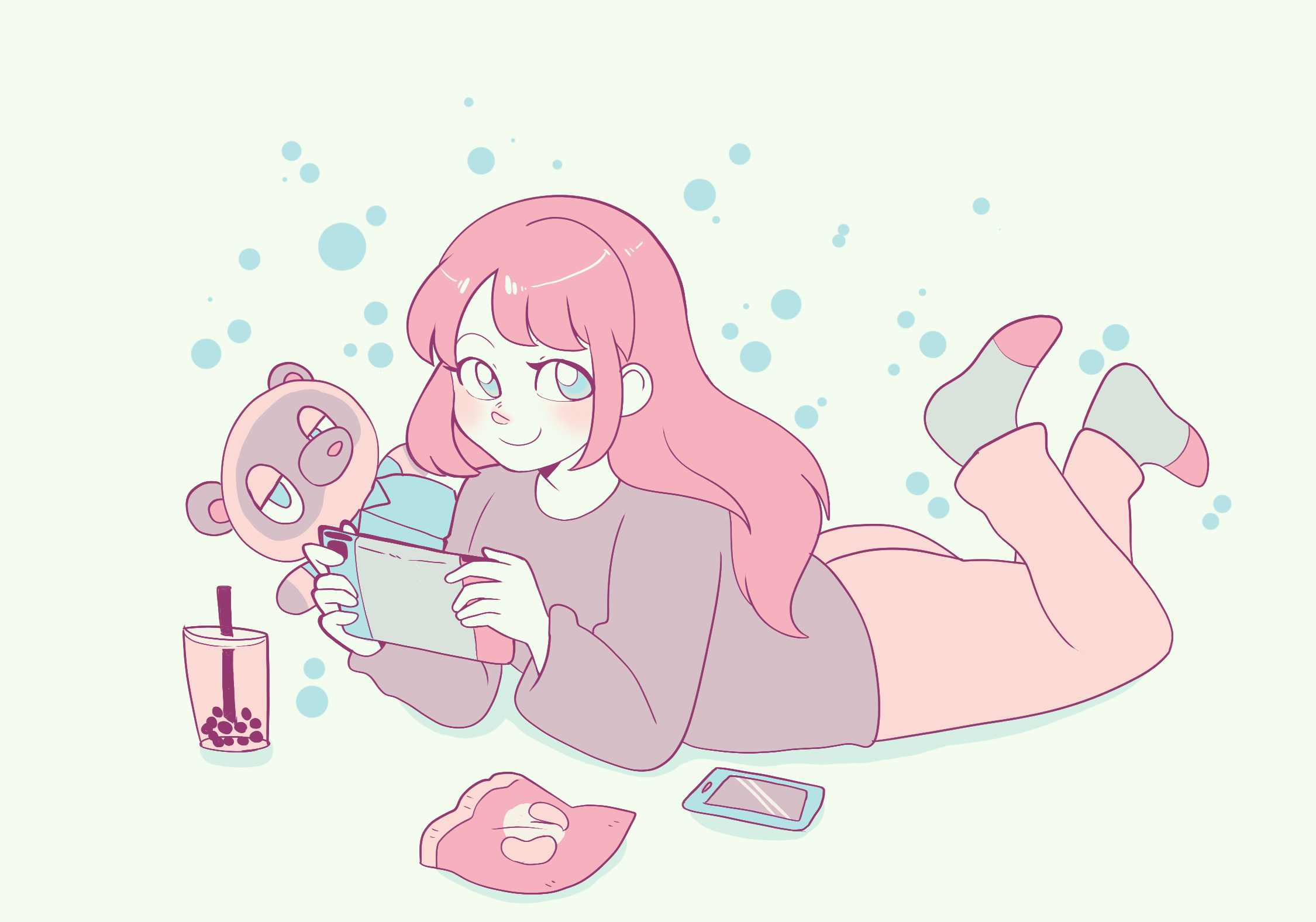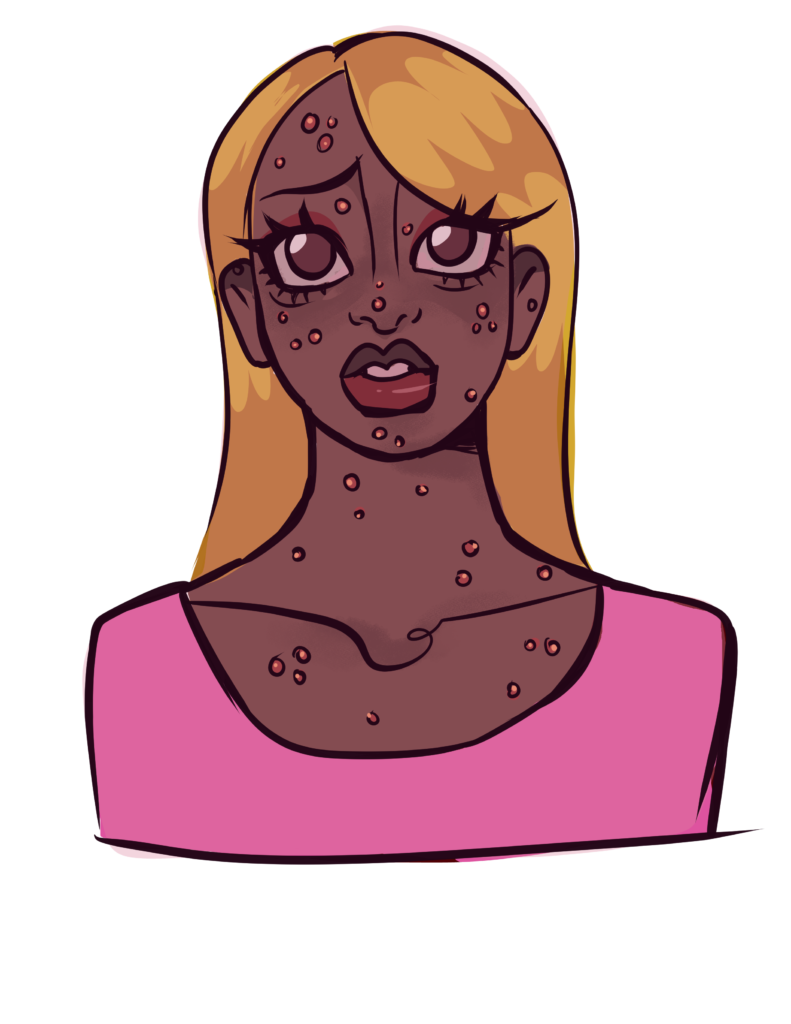
“Animal Crossing” is a girl game. It’s a game franchise with a vocal female fanbase. “Animal Crossing: New Leaf” had a 56% female player base. Culturally, it was picked up by a lot of women during the pandemic. Women playing “Animal Crossing” get misogynistic crap from ‘true gamer’ men for playing ‘girl games’. So, it’s a girl game, right?
Well, it’s not supposed to be. “Animal Crossing” is marketed without gender. You build a house and try to fix up an island or town so cute, anthropomorphic animals show up for you to befriend. There’s nothing gendered about that. It’s meant to be a game for everybody. What gives it its massive female audience?
The answer is simple: women don’t get anything else. Games marketed to women are few and far between, so we end up crowding gender-neutral games, planting our flag on games that are supposed to be for everyone — because everyone includes us, and there’s nothing for us specifically, so we make do with what we have. Let’s take a look at how female gamers interact with games marketed at different demographics, how we got here, and why it’s both deeply familiar and deeply frustrating for most women.
Games For Men
Here’s the thing: there aren’t really many girl games, but there are lots and lots of boy games. Sports games, shooters, most MMOs, and combat games all make up massive parts of the average AAA developer’s time. Generally, we assume what makes a ‘dude game’ a dude game is, well, boobs and guns. You shoot people, you’re very powerful, and women have big boobs and love you. Easy. And that’s sometimes part of it! Really though, in my opinion, what makes a game for men isn’t nearly so insidious, and it comes from a fundamental difference in how men and women experience video games. ‘Boy games’ are usually multiplayer online, because for men, playing video games is usually a social hobby. It’s something you do with friends, it can be a way to meet people. For men, gaming can foster really strong bonds and communities despite the anonymity of the internet.
Remind me again, how well do things go for women when anonymous men are involved?
So yeah, a lot of gaming in typically male-oriented games is heavily dependent on online features, which makes enjoying them a lot harder for women. For all the jokes about women not surviving in “COD” lobbies, there are women with their mics muted and masculine screennames in those lobbies trying not to become the target of either hateful or sexual harassment that might come their way as soon as they so much as speak.
Now, that’s not to say that the boobs and guns I mentioned aren’t problems! Because yes, some of these games do, in fact, have women in them. Sometimes. Technically. A kickass NPC or a female PC does in fact happen. But even then, they’re designed for the men looking at them, not the women playing them. Player characters find that the best armor also puts the non-optional double Ds of their character on display. Female NPCs flirt with you, or even just fully have a boning scene that you cannot skip (looking at you, “God of War III”). Even having a female player character, sexualized as they may be, can feel like a win when so often playing video games aimed at men means being a dude whether you like it or not.
No matter what, the barrier of entry for women is higher for these games. We can’t just play them as they’re intended to be played, we have to jump through hoops to get something even close to a similar experience. Mute your mic, scour the internet for strangers who might not immediately call you a bitch if you join their party, be friendly but not too friendly, wear the skimpy armor for the stats because you’ll die without it, let the game remind you again and again that your non-optional male character is a total stud, make excuses for the game, make none for yourself. It’s so much less fun because we have to do more work just to interact with a game that refuses to make an effort to include us.
Games for Women
I know, I know, I said they didn’t exist, but I can’t talk about girl games and boy games without addressing two elephants in the room.
The first is that games for girls are technically out there. As a former girlsgogames.com lover, I can’t tell you they don’t. “Super Salon High” on Roblox and “Anna and Elsa Dress Up” are definitely aimed at girls, it’s just that they’re aimed at girls in the literal sense- as in, little girls. And even then, I don’t think it’s controversial to say that little girls deserve higher quality games than borderline fetishistic pimple-popping games on the faces of Disney princesses.
The second is that there are also games aimed at adult women. They exist. They’re just generally indie romance games. Nothing wrong with that! I love a good romance visual novel. They’re great, they let artists and writers show off their abilities, and they’re fun, but also they are absolutely usually coming from small indie studios with launches more likely to come from itch.io than E3, and from teams sourced by asking on Twitter ‘Hey does anyone know how to code?’ It’s absurd that such a massive demographic’s only catering comes from small independent teams, and even then, it’s largely romance-focused content. While I love these games, I can’t help but see them as a symptom of a market left to rot by large developers, with indie teams picking at the bones with small-budget games. Games focused towards women have so much potential just sitting there waiting to be used, and can be so much more than an underground community.

Gender-Neutral Games
Most gender-neutral games tend to end up being either single-player or co-op, either isolated experiences or experiences meant to be shared with an already close friend. Classic examples are Minecraft, the Sims, most Nintendo games, all games with no or optional online element, and going without that doesn’t ruin the key experience. These games are usually enjoyed by large audiences, but their targeting tends to focus on older kids and younger teens, which is seen in their difficulty curves. That’s actually why many of them have optional online elements- they’re meant to be safe for kids, which usually involves not exposing them to the internet at large. They’re also where the majority of female gamers spend the bulk of their time! Games like “Stardew Valley,” “Terraria,” and “The Sims” are all single-player games known for large female audiences.
I love these games. I think they’re great, I think they’re fun, and I think they mean a great deal to a lot of people of all genders. I’m also still frustrated. The younger target demographic of these games can be a tough pill to swallow when games aimed at men are fine with and often celebrated for covering mature topics. Most gender-neutral games are rated E for Everyone, which is great. They speak to a universal perspective, which is also great! However, video games are fully capable as a storytelling medium, and in the words of Reese Witherspoon, women’s stories matter. We deserve stories told from our perspective with things to say about more than choosing a hot guy to kiss. There are a few gender-neutral games with mature ideas and topics, but typically, ‘mature’ gets interpreted as sexualizing.
An example that comes to mind is “Genshin Impact,” a wildly popular game with an almost 1:1 ratio of male to female players. It tackles themes like isolationism and political paranoia. It also. Cannot. Turn off the jiggle physics. This can turn running around as a female character from feeling like exploring a world to feeling out of place, like an intruder playing a game that isn’t meant for you.
The Liminality of a World Made For Someone Else
There are moments as a female gamer where your character is referred to as ‘he,’ unchangeably. When the pixel art’s character has jiggle physics on her visible cleavage. Putting on armor just to find it has a belly window and fishnets. An unskippable cutscene of a barely dressed woman trying to seduce you. It reminds us, in the middle of a game, that we are not supposed to play this game. It’s not for us. When the game developers designed this armor or that NPC, they were thinking about the reactions of players who look nothing like us. We are intruders in this world, a world by and for men.
Typically, one of the biggest challenges for video game developers is minimizing the space between the player character and the character. It’s a common challenge, getting consumers to feel what the character feels, to feel like their character is an extension of themself and the world. This is responsible for the creation of most first-person games, for being able to choose your character name, and for intuitive controls, so that we, the players, feel like ourselves. And yet, those same developers seem dead-set on widening that gap for women. To remind us that no, we do not get to be a character in a world, we get to awkwardly puppet a man, or a woman dressed to men’s fantasy, around a world filled with internet trolls and female NPCs designed more to be seen than spoken to. The responsibility is put on us to narrow that gap, to make the game work for us, to mod and to hunt down safe communities, and to just avoid that sidequest. It’s on us. We have to go out of our way to make the game feel at all like it was made with us in mind. A lot of us don’t even notice, because that’s just the way the world is too.
We get told as women, don’t go out at night, don’t go out alone, don’t wear ponytails, always have a knife. Because the world is not for us. We have to make accommodations just to be left alone, and even then, certain things are just not allowed to us. Clubs, the night, we avoid them or we take precautions against them. It’s exhausting to be doing something wrong by existing at the wrong time and place, it’s exhausting to have to make changes and sacrifices and ignore the people who think they have a right to your time — while not being too mean, because god forbid we hurt a man’s feelings when we should be able to just exist! The issue with these places and with these games is they make us both product and prey. Every overzealous game dev giving triple-Ds to the character central to their game’s marketing is no better than frat men putting scantily clad women in their rush videos, because both ways, women are no longer people to be spoken to, they are objects, prizes to be earned by rushing or by playing this game or buying that DLC. That’s the struggle experienced as a female gamer — trying to consume a product when part of that product is a funhouse mirror image of you, a constant reminder that not only are you not in the audience of game developers, but you are also not entirely human to them.
Video Games Are Art, Art Is For Everyone
Video games are a creative medium, undoubtedly. They have the capacity to be, and often are, art. Art speaks to everyone in different ways and comes from a variety of experiences, and video games should be the same! A key part of art is the perspective it comes from, and there’s no denying that not every perspective will speak to everyone. Games from a male perspective are fine, they’re great. The key is in the difference between telling stories with a male perspective and telling stories through the lens of the male gaze. The first is art told from a perspective that may not appeal to everyone, and the second is art that turns certain audience members, women, into a part of the spectacle without our consent. A great example of the first is “God of War Ragnarök,” which despite its predecessor’s many flaws is an incredible game with themes surrounding fatherhood — it speaks to a fundamentally male experience without sexualizing the women players meet throughout the story. Your character is unavoidably male, but he’s male for a reason greater than ‘Oh, that’s just the default.’ It tells a story that isn’t for women, without alienating women.
We deserve more than art painted from a blank mind, inoffensively told from no perspective. Art without gender is important, and it has its place, but so should art that speaks to gendered experiences. It is an uphill battle, one I see being fought every day, here on campus, in droves of women seeking to work in the games industry, and that fills me with joy. Right now, “Animal Crossing” may be all we have to call a girl game for now, but the future is so brilliant, I might have to turn my brightness down.

Comments